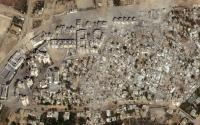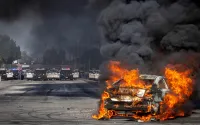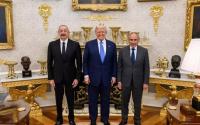7 September 2005Znet
Arms merchants from industrialized nations are increasingly finding Asia, which has replaced the Near East as the world's top conventional-weapons market, the place to go, according to a new report by the Congressional Research Service (CRS).Led by purchases by China and India, the world's most populous region accounted for nearly 50% of the total value of all new arms-transfer agreements with developing nations from 2001 through 2004, according to the report. India led the rankings in 2004 by signing US$5.7 billion in new arms deals that year, according to the report, the latest in an annual series.It also found the United States and Russia continue to dominate all other arms suppliers by a significant margin in selling to developing countries.US and Russian companies last year signed agreements worth almost $7 billion and $6 billion, respectively, in conventional weapons for developing countries. Their combined total accounted for nearly 60% of the $21.8 billion in all such sales to developing countries for 2004.Britain ranked third in the value of new arms agreements in 2004, while Israel made its first appearance in the top five of the arms-selling list, with sales worth $1.2 billion for the year. The big advance by Israel was due to a one-off deal for India's purchase of an airborne radar system, called "Phalcon".Israel has grown steadily as an arms supplier in recent years, but has promised Washington that it would stop selling military and dual-use high-technology equipment to China, which has been a lucrative market for the Israelis over the past decade.In actual arms deliveries for 2004, the US dominated the market with nearly $18.6 billion worth of transfers -- or 53.4% of all deliveries to developing countries -- far ahead of Russia, the number two supplier, with $4.6 billion in deliveries, or France, which made $4.4 billion worth of arms transfers.The report, "Conventional Arms Transfers to Developing Nations, 1997-2004", is produced each year by CRS expert Richard Grimmett and widely considered to be one of the most authoritative sources on the conventional arms trade because it's based on classified information as well as public data.One of its major findings is that the nearly $22 billion in new arms agreements signed between developed and developing countries last year marks a sharp increase over the previous year, when the total came to $15.1 billion. Last year's sales were indeed the highest since 2000, according to the report. Actual arms deliveries during the year were also the highest since 2000.Conventional arms sales to developing countries have generally accounted for between 55% and 72% of all arms globally. For the period 2001-2004, according to the report, developing countries received 57.3% of all arms transfers. During the same period, they accounted for about 63.2% of the value of all actual arms deliveries.While the Near East had been the largest arms market in the developing world -- accounting for 49.2% of the value of all developing-country arms agreements in 1997-2000 -- Asia took its place in 2001-2004, accounting for some $35 billion in new arms during the period, according to the report.The change is due, in part, to the leveling off of major arms purchases by Saudi Arabia and other Gulf states in the aftermath of the first Gulf War in the early 1990s.Nonetheless, Saudi Arabia ranked second behind India among developing-country recipients in 2004, with $2.9 billion worth of new agreements, while Egypt, Oman and Israel ranked fourth, fifth and sixth, respectively, behind China, the number three buyer, with $2.2 billion in new sales agreements.For the eight-year period 1997-2004, the report found that India was the leader, with $15.7 billion worth of new deals, followed by China ($15.3 billion), the United Arab Emirates ($15 billion), Egypt ($12.8 billion), Saudi Arabia, ($10.5 billion), Israel ($9.8 billion) and South Korea ($8.2 billion).But that statistic hid the emergence of China as a major arms buyer over the past three years. Ranked number seven in the 1997-2000 period, when the UAE and India led the lists, China jumped to the top spot in 2001-2004, buying $10.4 billion worth of weaponry, most of it from Russia, which has been India's most important supplier as well.Indeed, Russia's share of Asia's arms market is more than twice that of the US and appears to be growing. While Washington was the supplier in nearly two-thirds of all new arms agreements in the Near East in 2001-2004, it accounted for only about 21% of the Asia market in the same period.Russia, on the other hand, sold 48.1% of all conventional arms sold to Asian clients in 2001-2004, up from 37% in 1997-2000.
Grimmett noted that Russia has made "important efforts, in recent years, to provide more flexible and creative financing and payment options for prospective arms clients", including licensed production agreements that have paid off with both China and India that "should provide it with sustained business during this decade".Aside from those two countries, the report found that Moscow appears focused on Southeast Asia, where it has had "some success in securing arms agreements with Malaysia, Vietnam and Indonesia".In terms of actual arms deliveries, the Near East is still the developing world's leader. Similarly, the US was the leader in arms supplies to Asia from 1997-2000, accounting for 35.4% of all deliveries to the region. But it slipped to second place in the 2001-2004 period, with 30.6%, behind Russia's 45%.While some nations in Latin America, and to a significantly lesser extent in Africa, have expressed interest in modernizing their military forces, according to the report, they have been constrained by over-stretched treasuries, a factor that could be strengthened by the recent spike in oil prices for all but oil exporters.Still, arms purchases by Latin American countries grew from $3.3 billion in 1997-2000 to $4.7 billion in 2001-2004.
Jim Lobe is a Washington-based journalist who writes for Inter Press and other outlets. This article was published at Inter Press Service on September 2, 2005.






